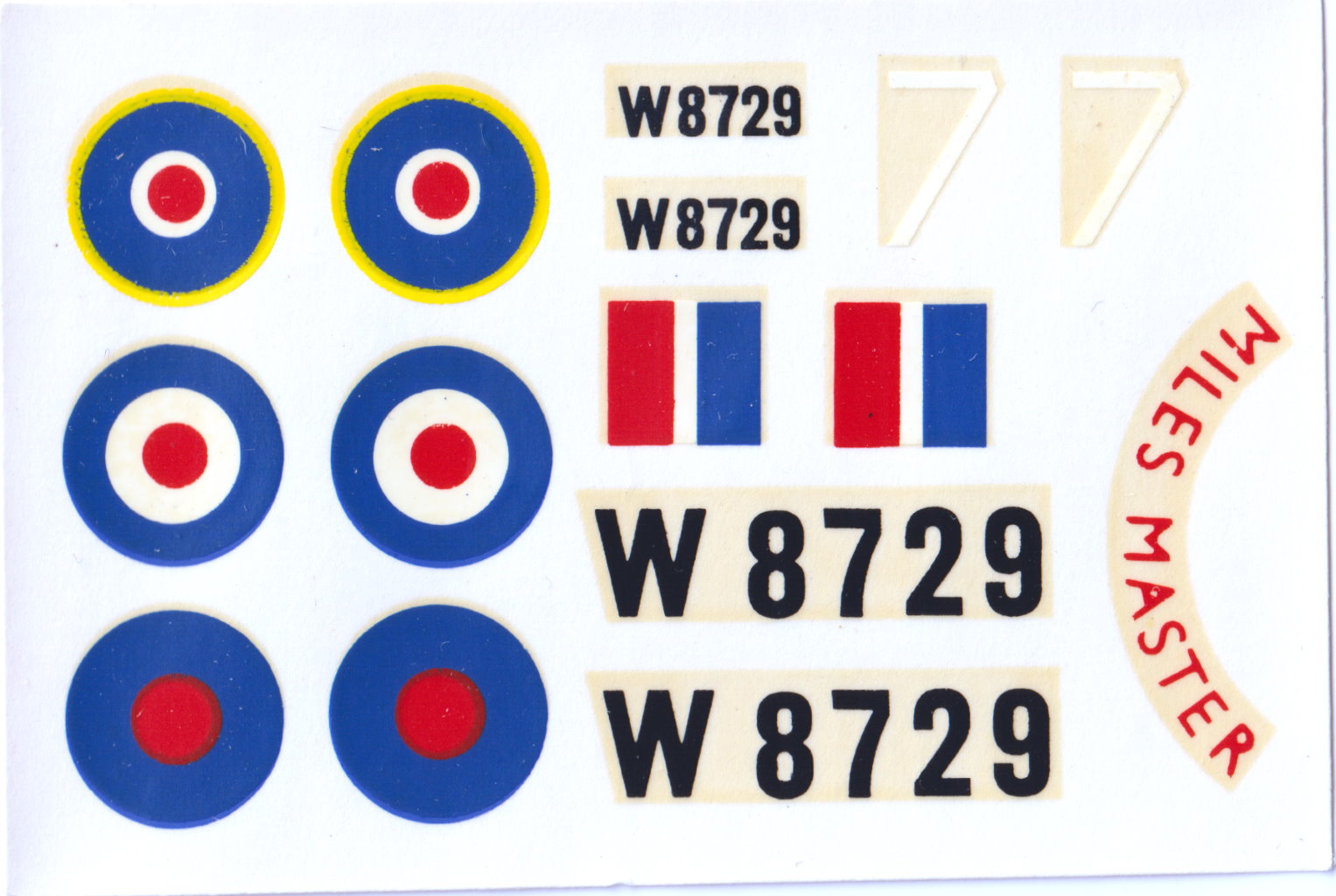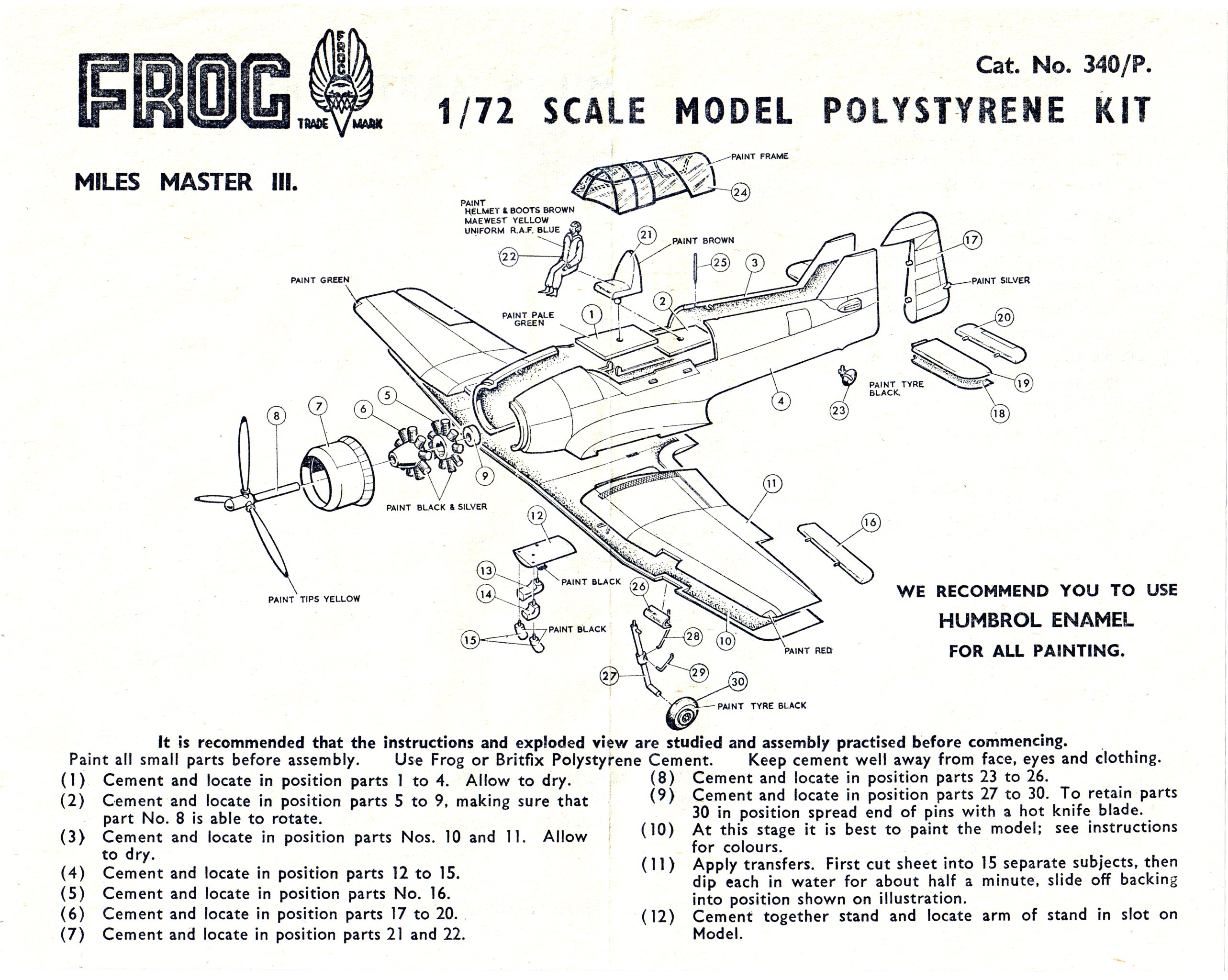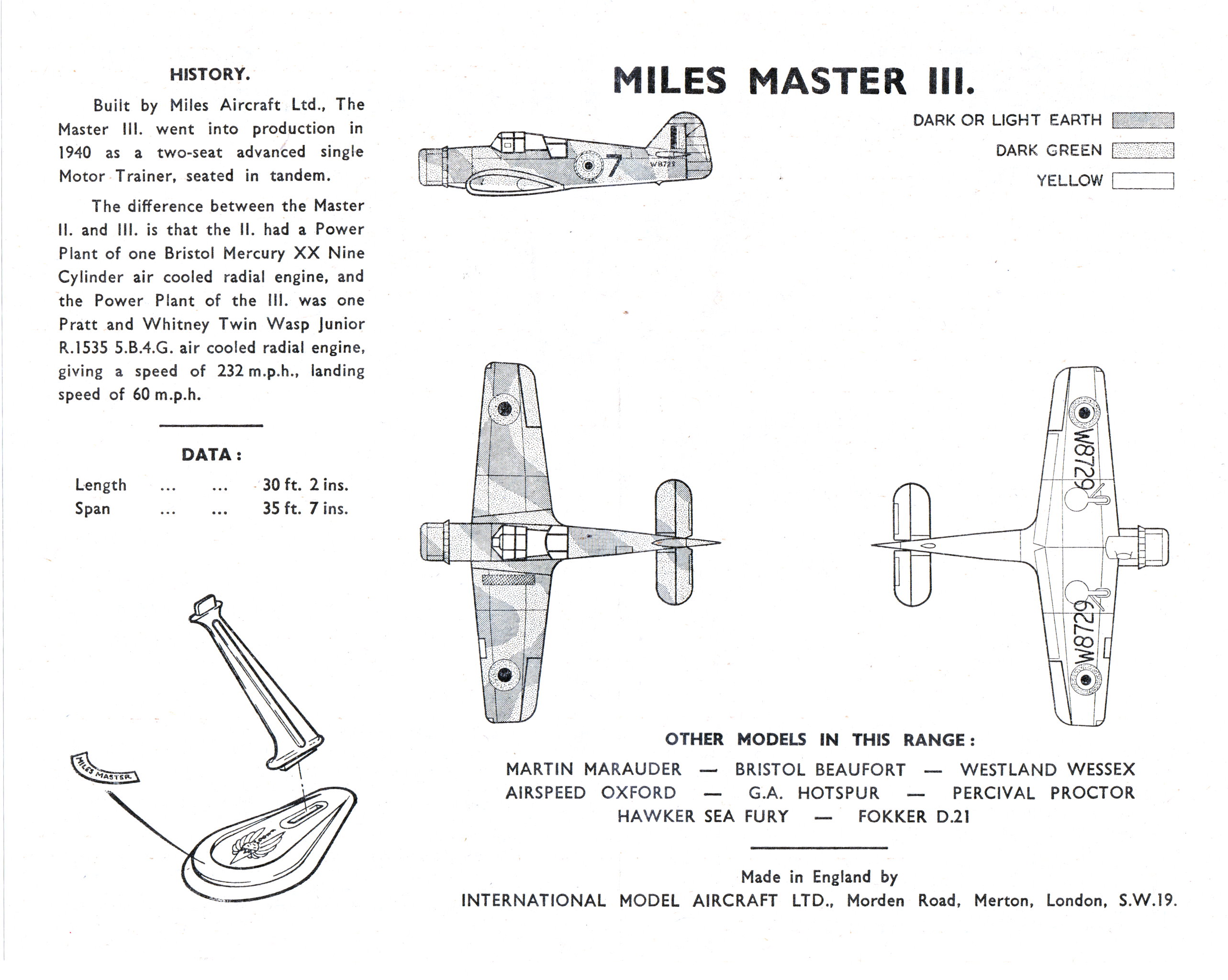






|
Over the counter
FROG
PLASTIC kit of the month from Frog is the Martin Marauder. This is yet another excellent kit of a previously unjustly neglected prototype. The box, with its rather dubious colour scheme top, provides a glimpse of forthcoming additions to the range including a Martin Baltimore and a Miles Master II.
Model Aircraft june 1963
Model Talks
MILES MASTER III
In general, the most interesting and colourful aircraft schemes and markings of the Second World War were sported by operational machines, but training aircraft, many of which made extensive use of yellow in their finishes, should not be ignored, and a welcome newcomer from Frog is the Miles Master III.
The Master kit is well up to the standard that has now come to be expected from Frog, and is well moulded in yellow plastic and accurate in dimensions and detail, the only real criticism, and that a minor one, being the excessive thickness of the tailplane. Spanning 6 5/6 inches and to 1/72nd scale, this kit may be adapted as a Martinet target-tug, and we will provide details of this conversion next month. One of the features of the Master was the lid-cum-screen provided the instructor whose seat had a wide range of adjustment, permitting him to pop his head above that of the pupil, and the lover of gimmicks should have little difficulty in hinging the rear top panel of the canopy and installing an adjustable seat.
Of course, as the Master featured fabric and plywood covering, there is no call for rivet detail on this model, but in any case, the present range of Frog 1/72nd kits wisely make no attempt to indicate rivets, unlike those of some other manufacturers who persist in scattering more rivets over their models than weeds in a cabbage patch. At this scale only the main panel joins should be indicated, and a profusion of rivet heads takes some removing if a really neat model is demanded.
Richard L. Ward
Flying Review 1963-11
OVER THE COUNTER
The Frog Miles Master III is another less famous, or at least little modelled, aircraft. Here again small errors mar an otherwise extremely pleasing kit and one cannot help but wonder if a little less haste in extending their range would allow the application of the proverbial halfpen'orth of tar. All the joints are Very clean, with the exception of the intake/exhaust mount that is fitted under the nose between the cowl and wing, this piece being approximately ⅛ in. too short. It is best to position it so that equal gaps occur at front and back. In this way the forward gap is hidden by the exhaust pipes and intakes and the rear gap can easily be filled.
The cockpit top line is in error as it curves down at the front of the rear top panel, instead of being straight. This can be overcome by cutting off this one panel and replacing it with a correctly shaped and polished piece of clean polystyrene, or else cutting it away carefully and cementing back on again in a vertical position (this rear panel being in fact a hinged windscreen). This is what we did and it is clearly shown on our photograph.
The underwing roundel transfer is not in keeping with the others in the set and needs replacing by a pair with thin white band. Another fault is the lack of dihedral on the outer wings, which is possibly a result of too tight a fit of the centre section about the fuselage. The bottom half of the wing being one piece, tends to spring down. Although it is not likely to be noticed on the built up model, this is, in fact, a rather high-powered Master III, having an 18-cylinder engine in place of the standard 14!
Incidentally, if you are using Humbrol paint on your Master III, a more accurate shade of yellow can be obtained by using gloss yellow, followed by a coat of flat finish, the standard Humbrol matt yellow being too pale for this period.
Latest Frog kit is the Douglas Boston III. It will be reported on more fully next month, together with the latest Airfix offerings—the Boeing 707 and Yak 9.
Model aircraft, January 1964
Miles M. 27 Master T.III
| 340P | 1963-1965 | E(B) | } 120000 | 1xRAF |
| F340 | 1965-1969 | F2(K) | 1xRAF |
An "F430" Master is mentioned in a late Frog document, but this was almost certainly just a misprint.
FROG model aircraft 1932-1976, R. Lines, L. Hellstrom
|
|




